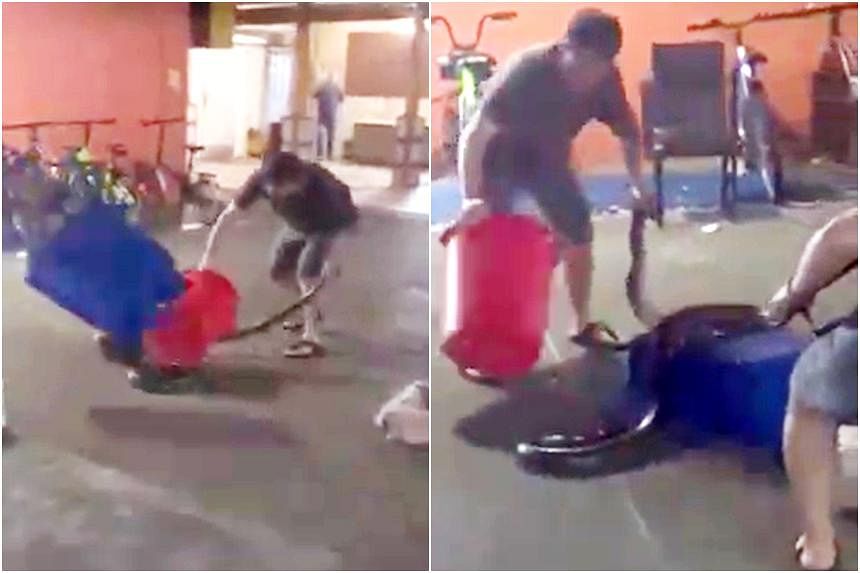
SINGAPORE – A 2m-long python was injured after members of the public pulled it out from a car’s engine compartment, scraping the snake’s skin and causing it to bleed from the mouth.
Another python, just as long, was repeatedly hit by plastic pails and crates at Boon Lay Place Market and Food Village and finally hacked to death. Cooked food stall assistant Ricky Cheong, 54, was fined $1,000 for the act.
Snakes in Singapore cannot seem to catch a break, not having enjoyed the best reputation in human tradition, religion, literature and media.
In the past eight years, the Animal Concerns Research and Education Society (Acres) has received a yearly average of about 14 cases of snakes abused and killed either by hot water or insecticide, and stuck on glue traps.
This is only the tip of the iceberg as the actual scale of abuse in Singapore is still not known, said Acres co-chief executive Anbarasi Boopal, popularly known as Anbu.
“There is no accurate data available as the snakes, in most cases, are already killed, and people do not call Acres but just dispose of the body.
“Sadly, it is not uncommon to come across snakes that were sprayed with insecticides, stepped on, crushed with a broom, or had hot water poured on, resulting in injuries or death,” she said, adding that these actions were taken out of fear and ignorance.
Acres even made an annual average of three reports to the Animal and Veterinary Service (AVS), so action could be taken against perpetrators.
Director of wildlife management and outreach at NParks How Choon Beng said since 2021, NParks has received 20 reports of animal welfare-related feedback about monitor lizards and snakes, including one where two reticulated pythons were smuggled from Malaysia into Singapore.
It is an offence under the Wildlife Act to kill, trap or take any wildlife without the Director-General’s approval. Offenders can be fined up to $50,000, jailed for up to two years, or both if the offence is committed in relation to protected wildlife.
“We do have strong legislation for wildlife protection, however, when it comes to cases involving cruelty to snakes, the perception that snakes are feared or ‘dangerous’ appears to take precedence over the suffering they go through.
“We need to change this. If you compare the suffering of an abused cat and dog to that of a snake, it is the same. All of them feel pain. So, it is the responsibility of individuals to be aware of our own native wildlife and (what) etiquette to follow,” Ms Anbu said.
Scientific Officer at the Herpetological Society of Singapore (HSS) Shivaram Rasu said: “While there are venomous and/or large snakes of medical significance that are a cause for concern when near human settlements, the vast majority of snakes in Singapore are harmless, even when provoked,” he said.
